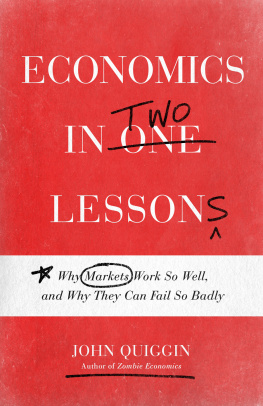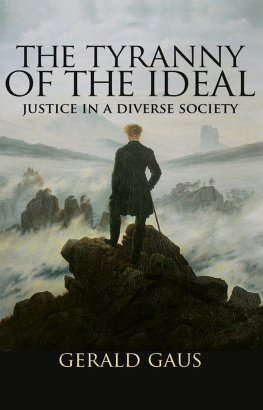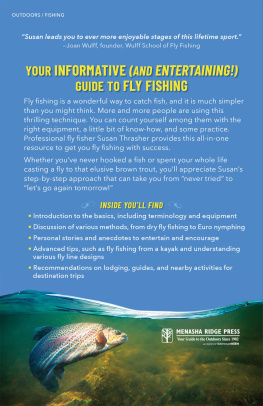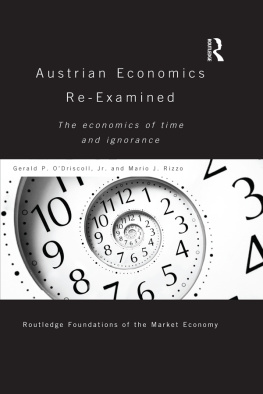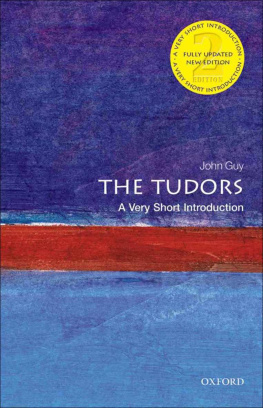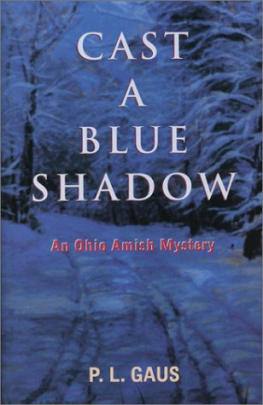Gerald Gaus and John Thrasher - Philosophy, Politics, and Economics An Introduction
Here you can read online Gerald Gaus and John Thrasher - Philosophy, Politics, and Economics An Introduction full text of the book (entire story) in english for free. Download pdf and epub, get meaning, cover and reviews about this ebook. year: 2021, publisher: Princeton University Press, genre: Romance novel. Description of the work, (preface) as well as reviews are available. Best literature library LitArk.com created for fans of good reading and offers a wide selection of genres:
Romance novel
Science fiction
Adventure
Detective
Science
History
Home and family
Prose
Art
Politics
Computer
Non-fiction
Religion
Business
Children
Humor
Choose a favorite category and find really read worthwhile books. Enjoy immersion in the world of imagination, feel the emotions of the characters or learn something new for yourself, make an fascinating discovery.

- Book:Philosophy, Politics, and Economics An Introduction
- Author:
- Publisher:Princeton University Press
- Genre:
- Year:2021
- Rating:5 / 5
- Favourites:Add to favourites
- Your mark:
- 100
- 1
- 2
- 3
- 4
- 5
Philosophy, Politics, and Economics An Introduction: summary, description and annotation
We offer to read an annotation, description, summary or preface (depends on what the author of the book "Philosophy, Politics, and Economics An Introduction" wrote himself). If you haven't found the necessary information about the book — write in the comments, we will try to find it.
Philosophy, Politics, and Economics An Introduction — read online for free the complete book (whole text) full work
Below is the text of the book, divided by pages. System saving the place of the last page read, allows you to conveniently read the book "Philosophy, Politics, and Economics An Introduction" online for free, without having to search again every time where you left off. Put a bookmark, and you can go to the page where you finished reading at any time.
Font size:
Interval:
Bookmark:
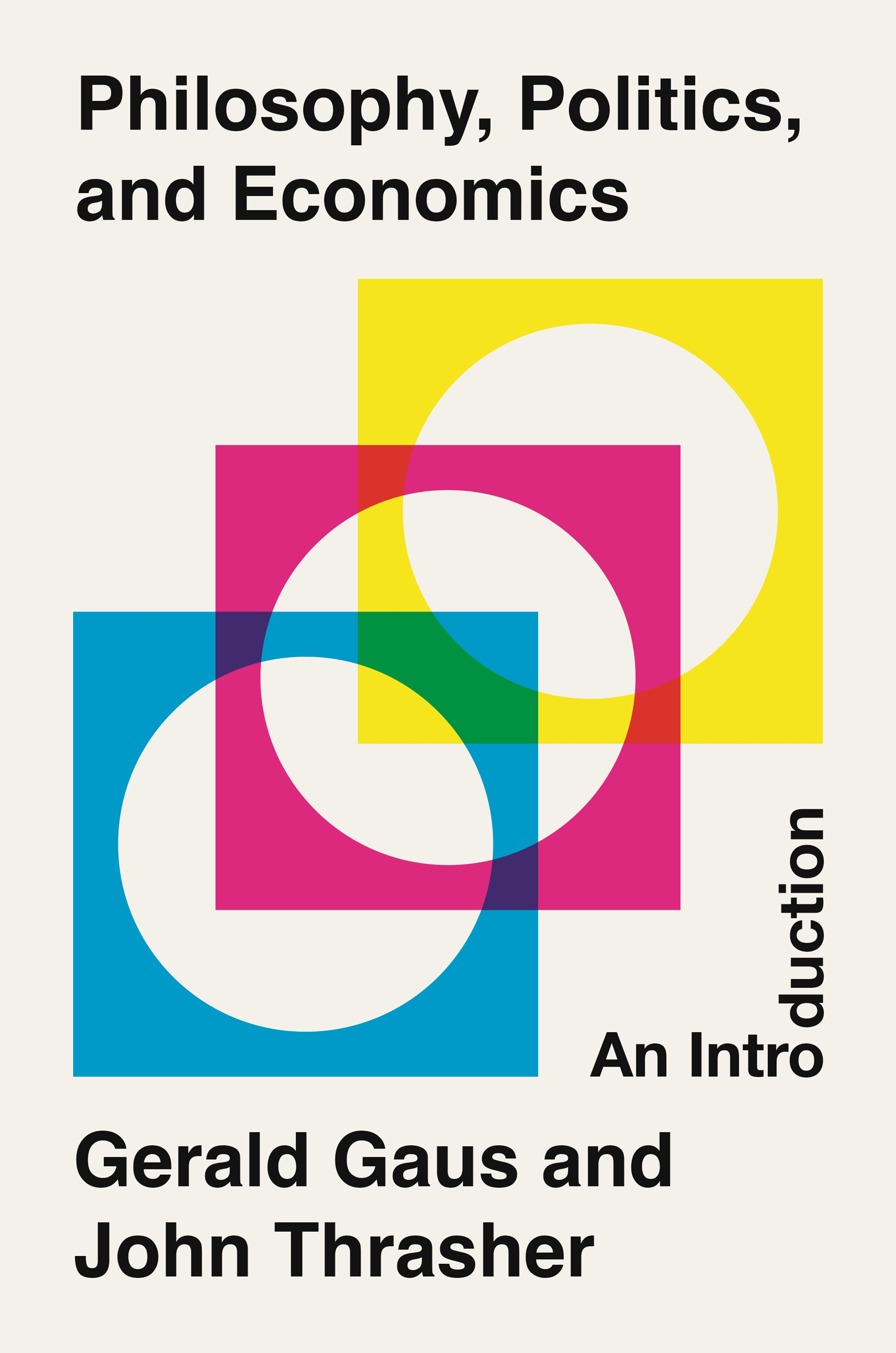
Philosophy, Politics, and Economics
Philosophy, Politics, and Economics
AN INTRODUCTION
GERALD GAUS
JOHN THRASHER
PRINCETON UNIVERSITY PRESS
RINCETONOXFORD
Copyright 2008 by Thomson Wadsworth, a part of The Thomson Corporation. Revised edition copyright 2021 by Princeton University Press.
Princeton University Press is committed to the protection of copyright and the intellectual property our authors entrust to us. Copyright promotes the progress and integrity of knowledge. Thank you for supporting free speech and the global exchange of ideas by purchasing an authorized edition of this book. If you wish to reproduce or distribute any part of it in any form, please obtain permission.
Requests for permission to reproduce material from this work should be sent to
Published by Princeton University Press
41 William Street, Princeton, New Jersey 08540
6 Oxford Street, Woodstock, Oxfordshire OX20 1TR
press.princeton.edu
All Rights Reserved
ISBN 9780691211251
ISBN (pbk.) 9780691219790
ISBN (e-book) 9780691219806
Version 1.0
Library of Congress Control Number: 2021944858
British Library Cataloging-in-Publication Data is available
Editorial: Matt Rohal
Production Editorial: Karen Carter
Jacket/Cover Design: Layla Mac Rory
Production: Danielle Amatucci
Publicity: Alyssa Sanford
Copyeditor: Karen Verde
- xi
- 79
This book grew out of decades of teaching in a variety of different types of classrooms. While there are many excellent introductory texts in decision theory, economics, game theory, social choice theory, and public choice, we were at a loss to find a single book that worked as an introduction to Philosophy, Politics, and Economics (PPE) for advanced undergraduates or graduate students. In response, Jerry Gaus published what he called his little book on PPE in 2007, versions of which he used at the University of Queensland, the University of MinnesotaDuluth, Tulane University, the joint UNCChapel Hill/ Duke Philosophy, Politics and Economics program, the Di Tella University Law School in Buenos Aires, and the University of Arizona. I also taught a modified version of that material at Monash University and at Chapman University.
Over the course of the last several years, though, we both saw the need for a more comprehensive and focused approach that would cover some additional ground and make certain points more clearly. During that time, there was also an explosion of interest in PPE and a corresponding growth in the number of PPE programs that were seeking to teach classes in this area. We saw the need for a book that could cover the basic methods that inform the PPE approach in a way that was both philosophically rigorous and technically accessible. This book is a culmination of that pursuit.
I had been encouraging Jerry to write just such a book ever since I started teaching from his previous book on the topic. We both recognized that the older book, as good as it was, didnt do everything we wanted it to do. The opportunity to write a new and better book arose when Princeton University Press became interested in the idea. Given my interest in a new and improved introductory PPE text, Jerry asked if I would be interested in coming on board as a co-author. At the time, I had just moved from Monash University in Melbourne, Australia to Chapman University in southern California and was excited to help craft the kind of book that I wanted to teach. I also relished the opportunity to collaborate with Jerry on the book, who was not only a teacher and mentor, but also a friend. I looked forward to discussing the material and to the inevitable debates on topics where we disagreed. We talked about plans for the book over the spring and early summer of 2020 and signed the contract for the book with Princeton on August 15, 2020. I looked forward to spending the next several months immersed in this material and in discussion with Jerry. Only a couple of days later I heard from a close mutual friend that Jerry had died in his sleep the night before. The news was devastating and totally unexpected.
Following Jerrys untimely death, there was the obvious question of whether to continue the project. After talking to Jerrys surviving family, several colleagues (many of whom were students or friends of Jerrys), and our Princeton editor Matt Rohal, I decided to complete the book. Doing so presented several serious challenges, however. Jerry and I had already developed a fairly detailed plan of how we wanted the book to go and had even decided who would write the first drafts of each chapter. He also left extensive notes that formed the basis of his PPE lectures at the University of Arizona that I could draw on, as well as the previous PPE book. Using this material as a starting point, I wrote the book with the spirit of Jerry in mind, aiming to keep his distinctive voice at the forefront. Where I know that we disagreed on some issue or question, I either present both views or err on the side of Jerrys preferred view. Even so, this is a different book than we would have written together. We will never get to see that book. Nevertheless, I have tried to write a book that comes closest to the one that I believe would have emerged from our collaboration. His spirit was with me every day while I wrote, and I took the responsibility of completing this project in his name very seriously. Jerry is irreplaceable as a teacher and a writer, but my hope is that, with this book, a part of him will live on to inform the teaching of others and to continue to illuminate the minds of students even though his direct presence is gone.
Many thanks are due to those who worked hard to bring this book to fruition during the difficult plague year of 2020 and after the loss of Jerry. Matt Rohal, our editor at Princeton, has been especially understanding, compassionate, and helpful during this process. Without his encouragement and interest, this book would not exist. Jerrys surviving family, his daughter Kelly and his beloved wife Andrea, gave me their blessings to proceed with the project, as well as encouragement and support, which was essential. Several of Jerrys students and friends, most notably Keith Hankins, Chad Van Schoelandt, Kevin Vallier, and Ryan Muldoon, were generous in their friendship and time in discussing crucial issues in this book. Some of my other colleagues at the Smith Institute for Political Economy and Philosophy have also discussed many of the books ideas with me (sometimes without knowing it)to my enormous benefit. These include Erik Kimbrough, David Rojo-Arjona, Bart Wilson, and Vernon Smith. I thank them, as well as the other members of the Smith Institute and their families, for making it such a hospitable, vibrant, and fun place to be.
The person I owe the most gratitude to is my wife Molly. The unusual circumstances of completing this book without Jerry, combined with the stress and strain of life during a pandemic, put more demands on me and, in turn, on my family than it would have otherwise. This has not always been easy, but it would have been impossible without her fortitude and compassion. I also thank her and my three-year-old son Jack for reminding me every day what is really important. Although completed under strange and difficult circumstances, writing this book was a labor of love in more ways than one.
John Thrasher
Orange, California
The waning days of 2020
Font size:
Interval:
Bookmark:
Similar books «Philosophy, Politics, and Economics An Introduction»
Look at similar books to Philosophy, Politics, and Economics An Introduction. We have selected literature similar in name and meaning in the hope of providing readers with more options to find new, interesting, not yet read works.
Discussion, reviews of the book Philosophy, Politics, and Economics An Introduction and just readers' own opinions. Leave your comments, write what you think about the work, its meaning or the main characters. Specify what exactly you liked and what you didn't like, and why you think so.

